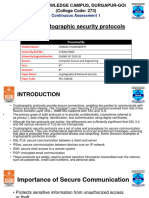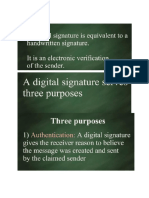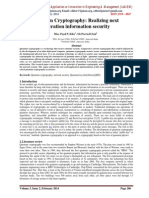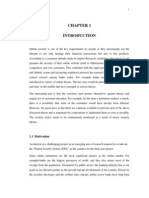0% found this document useful (0 votes)
23 views15 pagesUnit 5
Digital signatures are cryptographic techniques used to verify the authenticity and integrity of digital messages, employing public key cryptography for secure communication. Hybrid ciphers combine asymmetric and symmetric cryptography for efficient secure communication, while SSL/TLS protocols ensure encrypted data transmission over networks, with TLS being the modern standard that addresses vulnerabilities found in SSL. Transitioning from SSL to TLS involves upgrading servers, obtaining valid certificates, and disabling insecure protocols to enhance security.
Uploaded by
MONISH MONNATCopyright
© © All Rights Reserved
We take content rights seriously. If you suspect this is your content, claim it here.
Available Formats
Download as PDF, TXT or read online on Scribd
0% found this document useful (0 votes)
23 views15 pagesUnit 5
Digital signatures are cryptographic techniques used to verify the authenticity and integrity of digital messages, employing public key cryptography for secure communication. Hybrid ciphers combine asymmetric and symmetric cryptography for efficient secure communication, while SSL/TLS protocols ensure encrypted data transmission over networks, with TLS being the modern standard that addresses vulnerabilities found in SSL. Transitioning from SSL to TLS involves upgrading servers, obtaining valid certificates, and disabling insecure protocols to enhance security.
Uploaded by
MONISH MONNATCopyright
© © All Rights Reserved
We take content rights seriously. If you suspect this is your content, claim it here.
Available Formats
Download as PDF, TXT or read online on Scribd
/ 15






















































































